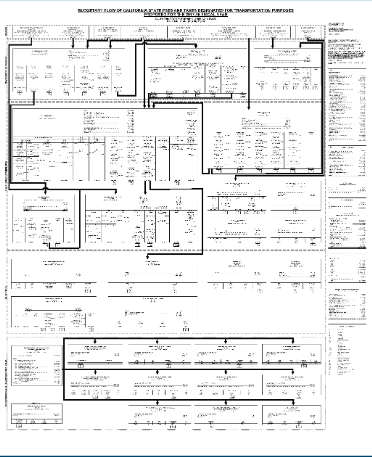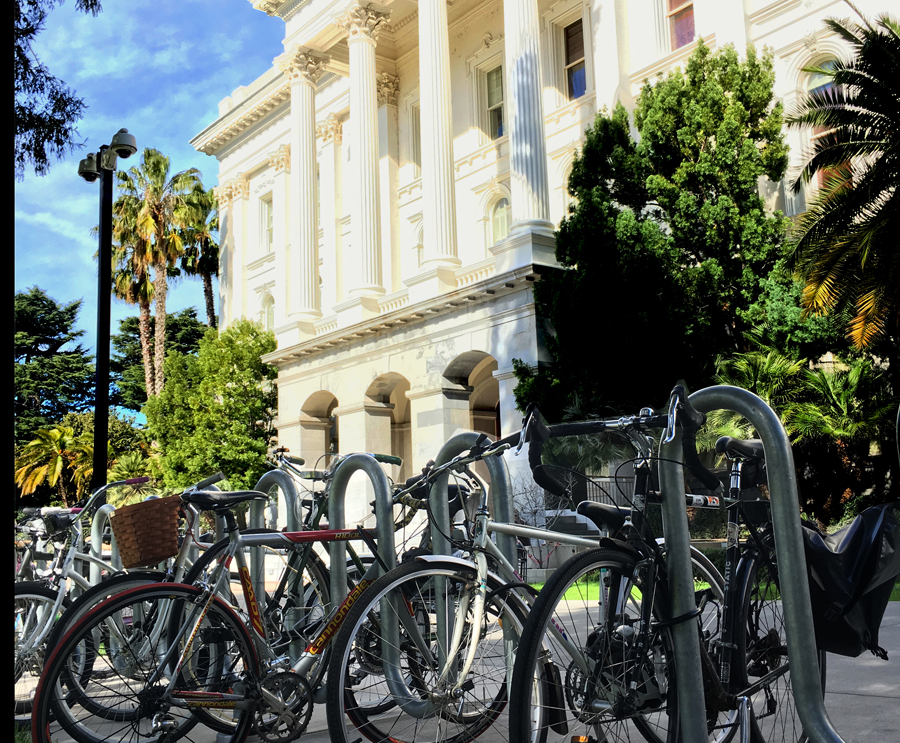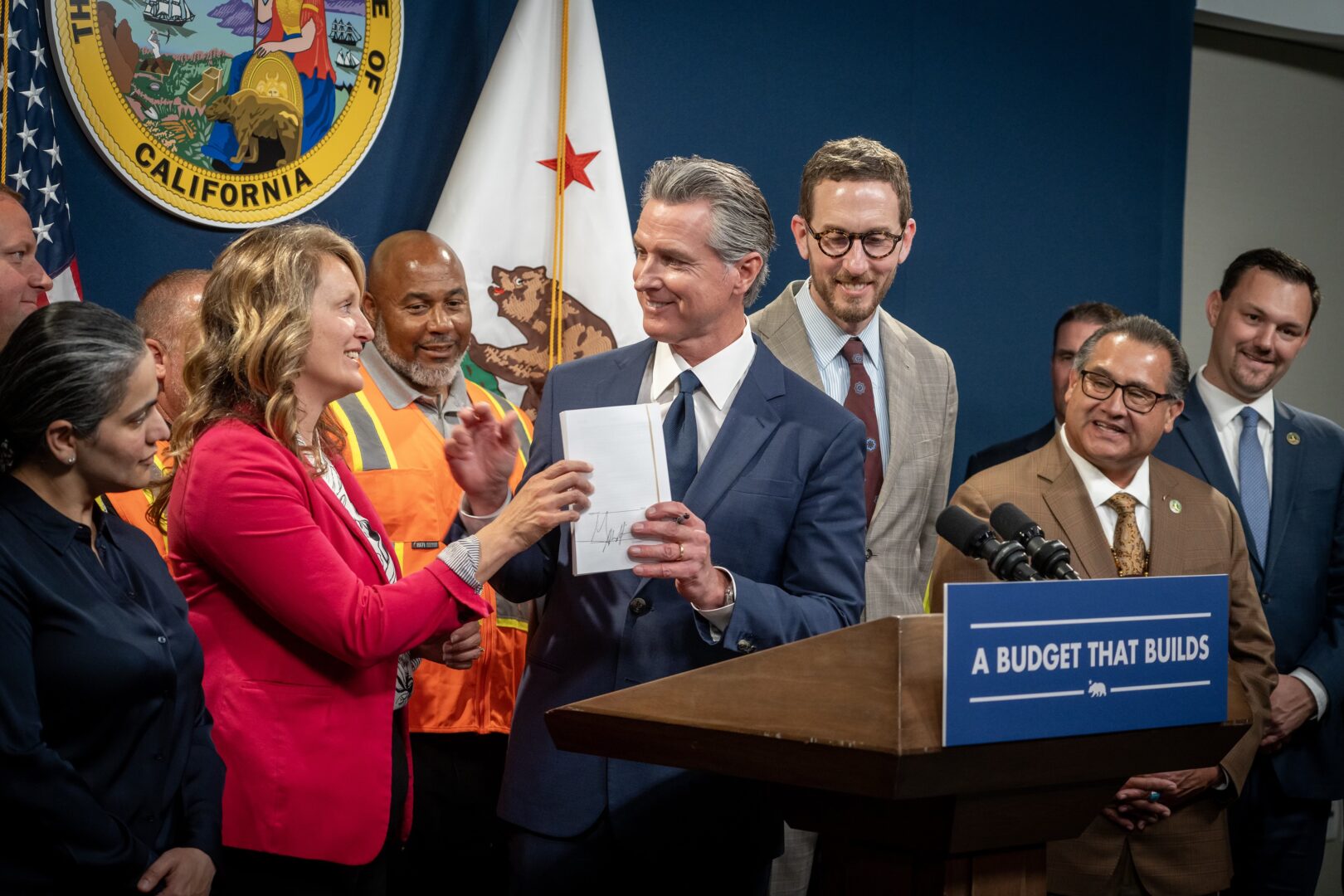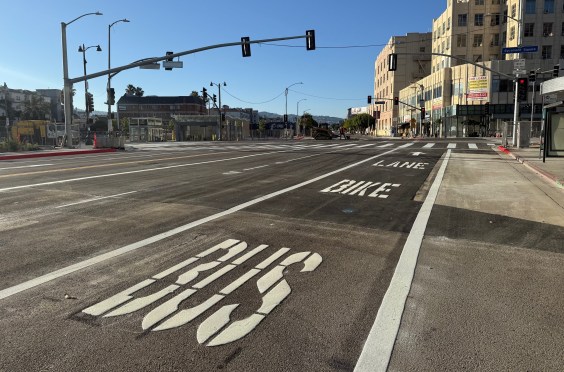Note: GJEL Accident Attorneys regularly sponsors coverage on Streetsblog San Francisco and Streetsblog California. Unless noted in the story, GJEL Accident Attorneys is not consulted for the content or editorial direction of the sponsored content.
Amidst all the news in the last week, both state and national, one seemingly small bit of information got a little bit lost in the shuffle. But Governor Newsom's Executive Order [PDF], released two weeks ago, was anything but small: for the first time, the state's top leader is calling for transportation funding to align with state goals on climate and the environment, and to help people cut back on driving.
Advocates for clean air, active transportation, and housing have been pushing for something like this for years; the California Air Resources Board has been saying it's needed for quite a while. But the agencies charged with transportation funding decisions - Caltrans and the California Transportation Commission - have been slow to come around.
The previous administration talked about climate and environmental goals, but focused on creating a financial mechanism to reduce pollution through cap-and-trade, and on cleaner energy, electrification, and technological fixes. Those efforts have so far done little to reduce greenhouse gas emissions from the transportation sector, which continues to produce almost half of the state's total emissions, much of it from vehicles.
Meanwhile much of the state's transportation funding continues to go towards projects that will increase driving and all kinds of emissions. Caltrans and the CTC point to the Active Transportation Program as evidence that they do fund sustainable transportation, but that program is so small compared to the overall transportation budget, and the need for that money is so big, that its impact is muted.
Caltrans and the CTC also still believe that their job is to make it easier to drive, despite setting goals to shift more trips to other modes and largely ignoring mounting evidence that creating more capacity leads to more driving and more congestion, not less. The governor's executive order charges CalSTA, which oversees both departments, with finding ways to align funding for transportation planning and programming with climate goals, including helping Californians reduce driving.
This could bring a completely new direction to the state's funding priorities.
Chanell Fletcher, executive director of ClimatePlan, one of the advocacy organizations that have worked for this, points out on the group's site that the Executive Order "calls out key strategies to help the State Transportation Agency in its efforts," among them:
- Aligning the state’s climate goals with transportation spending on planning, programming, and mitigation to achieve the objectives of the 2017 [Air Resources Board] Scoping Plan
- Reducing vehicles miles traveled (VMT) by strategically directing discretionary transportation investments in support of housing production near available jobs and in accordance with the state’s smart growth principles.
- Reducing congestion through strategies designed to encourage people to shift from cars to other modes of transportation.
- Funding active transportation options that contribute to the overall health of Californians and reduce greenhouse gas emissions, such as walking, transit, biking, and other active modes.
- Mitigating increases in transportation costs for lower income Californians.
ClimatePlan, along with Climate Resolve, CalBike, California Walks, the Coalition for Clean Air, Public Advocates, and a host of other advocacy organizations, developed a document called Lead the Way, California last year to help guide leaders and legislators on the work that remains to get California planning and funding aligned with its climate goals.
A top priority is to map out how transportation funds are spent, and spell out the reasons for it. It's a common trope at CTC meetings, for example, to see a chart like the one below, with the comment that it is too complex to explain. That may be true - there are multiple sources of funds, and they are allocated through many different programs and according to a long list of sometimes conflicting rules and regulations. But someone other than a few number-crunchers at Caltrans ought to be able to understand it; responsible spending requires transparency and accountability.

Fletcher points out that there may also be obstacles in current state law that could prevent shifting funding towards sustainable transportation projects. Those obstacles need to be identified and removed.
State climate, equity, and health goals also need to be translated into project performance metrics that make sense and can be applied to transportation projects. Fletcher points out some potential metrics, including reducing vehicle miles traveled, improved transit service, more options like vanpools, and more incentives "for projects that support sustainable transportation modes like public transit, biking, and walking as well as street greening—especially since trees and plants along roadways help protect people from poor air quality and climate change impacts."
And along with measuring to see whether projects fulfill these performance benchmarks, the state needs to actively invest in sustainable transportation as a matter of course, through its regular road maintenance funds and other programs.
"We agree with Governor Newsom," writes Fletcher. "We cannot continue to invest in a transportation model that doesn’t help California achieve its climate goals."
Governor Newsom signing S.B. 127, the Complete Streets for All bill, would be a solid start.
A group of representatives from these organizations met recently with new CalSTA secretary David Kim, and came away optimistic that he supports the governor's Executive Order. He told them it was a priority for him to make it happen.
Advocates know there is still a lot of work to be done. One challenge, for example, is to ensure that what residents say they need for their local transportation actually gets elevated to the level of, say, ballot initiatives for local transportation taxes. These frequently are highly political processes, with a lot of horse trading, trying to give everyone what they want so they can meet the vote threshold. That tends to raise the needs of highway builders to the same level as local residents' needs and desires - and those don't always match.






